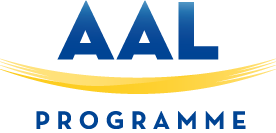The overall work plan is organised in 6 workpackages which comprise the following: 1) WP1 (End users and scenarios): Setting up and managing a stakeholder pool with ethical considerations so the mobility requirements of elderly persons can be determined and the resulting exoskeletons tested by real end users; 2) WP2 (Exoskeleton components): Theoretical studies of the systems needed, realisation of exoskeleton components comprising mechanical parts, sensors & controls, user interfaces, etc; 3) WP3 (System integration, testing and validation): Configuration of the components developed to realise Basic, Standard, and Deluxe exoskeletons, and testing by researchers in laboratories; 4) WP4 (Pilot test beds): User testing by elderly persons in Sweden, Germany, Spain, Switzerland, and UK; 5) WP5 (Commercialisation): Development of business and service models for implementation in different regions of the EU, and dissemination of the project results, and 6) WP6 (Project management): Overall work plan management and administration, finance, reporting, quality assurance, etc.
Objectives
EXO-LEGS is aimed at developing lower body mobility exoskeletons for helping people move around to perform normal daily living tasks. The motions include tasks such as standing up, sitting down, straight walking on flat ground, stepping over objects, walking on soft and uneven ground, walking up- and down-stairs, etc. EXO-LEGS will develop theoretical and modular frameworks able to realise prototype devices that can be useful for assisting human mobility. Basic, Standard and Deluxe exoskeleton prototypes (half- and full- models) will be designed, developed and tested in the five target EU countries.
Expected results and impact
The project targets research to AAL scenarios requiring simple, standard and difficult mobility solutions for maximising the impact so that logical commercialisation can follow together with making advances in key scientific areas. Commercial exoskeleton products which are reliable, affordable and compliant to the ISO 13482 safety standard for exoskeletons will be focused upon. Once these solutions are available, other user segments will be able to benefit, namely, handicapped persons, overweight people, etc to increase the impact further. An EXO-LEGS Consortium Agreement has been signed for commercialising in both medical and non-medical sectors.
Partners
Partners involved in the EXO-LEGS project
- Project name: Exoskeleton Legs for Elderly Persons (EXO-LEGS)
- Website: www.exo-legs.org
- Coordinator: University of Gävle, Sweden
- Duration: 36 Months
- Starting Date: 01.10.2012
- Total budget: €4.559.117
- Public contribution: €2.776.346
Contact
Professor Gurvinder S. Virk
E.: gurvinder.virk@hig.se
T.: +46 26 648704
